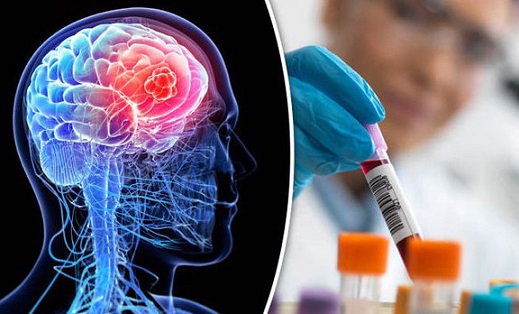Nikhil Prasad Fact checked by:Thailand Medical News Team Jul 07, 2024 9 months, 2 weeks, 5 days, 1 hour, 26 minutes ago
Cancer News: Brain tumors are a serious health issue that can affect anyone. One of the most common types of malignant brain tumors is gliomas. Diagnosing and monitoring gliomas can be challenging because traditional methods often require invasive procedures like biopsies. However, new research by scientists from National and Kapodistrian University of Athens-Greece that is covered in this
Cancer News report shows that cerebrospinal fluid (CSF), the clear fluid surrounding our brain and spinal cord, might hold the key to simpler and more effective diagnosis and monitoring of these tumors.
 Biomarkers In Spinal Fluid Can Help Diagnose And Monitor Brain Tumors
What Are Gliomas?
Biomarkers In Spinal Fluid Can Help Diagnose And Monitor Brain Tumors
What Are Gliomas?
Gliomas are a type of tumor that originates from glial cells in the brain. These tumors include various types such as ependymomas, astrocytomas, oligodendrogliomas, and the most aggressive form, glioblastomas (GBMs). Each type has unique characteristics, but they all pose serious health risks.
Glioblastomas: The Deadliest of All
Glioblastomas are the most common and aggressive type of brain tumor. They grow rapidly and are difficult to treat, with a very low five-year survival rate. These tumors are usually found in older adults and can cause symptoms like headaches, seizures, and cognitive changes.
The Role of Cerebrospinal Fluid (CSF)
CSF surrounds the brain and spinal cord, providing cushioning and nutrient support. Importantly, it is in direct contact with the brain tissue, making it a valuable source of information about brain health. Researchers have found that CSF contains various biomarkers - substances that can indicate the presence of disease - which are crucial for diagnosing and monitoring gliomas.
Types of Biomarkers in CSF
-Circulating Tumor DNA (ctDNA)
CtDNA refers to small fragments of DNA released by tumor cells into the bloodstream or CSF. These fragments can carry genetic mutations specific to tumors. By analyzing ctDNA in CSF, doctors can identify specific mutations associated with gliomas. For instance, mutations in the TERT and IDH genes are often found in glioma patients.
-MicroRNAs (miRNAs)
MiRNAs are small molecules that regulate gene expression. Certain miRNAs are found at higher levels in the CSF of glioma patients. For example, miR-21 and miR-10b are known to be elevated in gliomas and can help in diagnosing the presence and type of tumor.
-Proteins
Specific proteins in the CSF can serve as biomarkers for gliomas. Proteins like glial fibrillary acidic protein (GFAP) and chitinase-3-like protein 1 (CHI3L1) are often elevated in glioma patients. These proteins can help in diagnosing the severity of the tumor and monitoring its progression.
-Circulating Tumor Cells (CTCs)
CTCs are cancer cells that break away from the primary tumor and ente
r the bloodstream or CSF. Detecting these cells in CSF can provide valuable information about the tumor's presence and spread. However, isolating CTCs is challenging due to their rarity.
-Extracellular Vesicles (EVs)
EVs are tiny particles released by cells that carry proteins, DNA, and RNA. Glioma cells release EVs into the CSF, and these vesicles can contain specific mutations or proteins associated with the tumor. Analyzing EVs can help in diagnosing gliomas and monitoring treatment responses.
Benefits of Using CSF Biomarkers
Using CSF for glioma diagnosis and monitoring offers several advantages:
-Less Invasive: Collecting CSF through a lumbar puncture is less invasive compared to traditional brain biopsies.
-Early Detection: CSF biomarkers can detect tumors at an early stage, even before symptoms appear.
-Real-Time Monitoring: Regular analysis of CSF can help doctors monitor the effectiveness of treatment and make necessary adjustments.
Challenges and Future Directions
Despite the promise, there are challenges to using CSF biomarkers:
-Technical Limitations: Current methods to isolate and analyze biomarkers from CSF need improvement for better accuracy and reliability.
-Standardization: Establishing standardized procedures for CSF collection and analysis is crucial for consistent results.
-Validation: More research is needed to validate the clinical use of these biomarkers.
The Role of Artificial Intelligence (AI)
AI is playing a significant role in advancing glioma research. By analyzing vast amounts of data from CSF samples, AI can identify patterns and help predict the presence and progression of gliomas. Machine learning algorithms can enhance the accuracy of biomarker detection and provide personalized treatment recommendations.
Conclusion
The discovery of biomarkers in cerebrospinal fluid represents a significant breakthrough in the fight against gliomas. This method holds great potential for improving the diagnosis, monitoring, and treatment of brain tumors, making it a promising area for future research and clinical application. With continued advancements in technology and research, the use of CSF biomarkers could revolutionize how we approach brain tumor care, offering hope for better outcomes and improved quality of life for patients.
The study findings were published in the peer reviewed journal: Biomolecules.
https://www.mdpi.com/2218-273X/14/7/801
For the latest
Cancer News, keep on logging to Thailand Medical News.
Read Also:
https://www.thailandmedical.news/news/urgent-validation-needed-on-study-findings-showing-that-covid-19-mrna-jabs-altered-the-biochemical-composition-of-glial-and-glioma-brain-cells
https://www.thailandmedical.news/news/university-of-mississippi-study-shows-that-juice-of-the-cornelian-cherry-can-help-with-glioblastoma
https://www.thailandmedical.news/news/metformin-shows-potential-as-an-angiogenic-supplemental-adjuvant-for-glioblastoma-treatment
